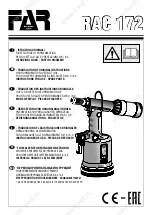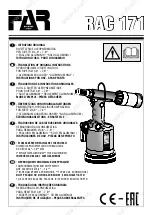
BEECHCRAFT King Air C90
Equipped With:
•
Swept Blade Turbofan Propellers
•
Dual Aft Body Strakes
•
Increased Gross Weight
•
PT6A-28 Engines
Revision IR: August 15, 2017
4-1
Document No. 16-206CGW-28
Section IV – Normal Procedures
SECTION IV — NORMAL PROCEDURES
AFTER STARTING ENGINES
CAUTION
Stabilized ground operation between 400 and 1,100 RPM is prohibited.
Operation between 0 and 400 RPM is permissible only with propeller
feathered.
WARNING
STABILIZED GROUND OPERATION WITHIN THE PROPELLER
RESTRICTED RPM RANGE CAN GENERATE HIGH PROPELLER
STRESSES AND RESULT IN PROPELLER FAILURE AND LOSS OF
CONTROL OF THE AIRCRAFT.
ICING FLIGHT
Electrothermal Propeller De-ice:
CAUTION
Do not operate propeller de-ice when propellers are static.
a. Before Takeoff:
(1) Propeller Heat Switch - HEAT.
(2) Propeller De-ice Ammeter - CHECK: 18 to 24 AMPERES. Monitor for 2 minutes
to assure automatic timer operation.
b. In Flight:
(1) Propeller Heat Switch - HEAT. The system may be operated continuously in
flight and will function automatically until the switch is turned to OFF.
(2) Relieve propeller imbalance due to ice by increasing RPM briefly and returning to
the desired setting. Repeat as necessary.
CAUTION
If the de-ice ammeter does not indicate 18 to 24 amperes, refer to the
EMERGENCY PROCEDURES section.
LANDING
WARNING
PROPELLERS WILL NOT REVERSE AT AIRSPEEDS ABOVE 100
KIAS. BETWEEN 95 KIAS AND 100 KIAS, SIGNIFICANT THRUST
ASYMMETRY MAY OCCUR IF REVERSE IS SELECTED.
SIMULATING ENGINE FAILURES
CAUTION
Using throttle cuts to simulate engine failures will result in the autofeather
system being disarmed. In this configuration the V
MCA
is 99 KIAS (101
KCAS). Dynamic throttle cuts should only be attempted at airspeeds
above 104 KIAS (105 KCAS).











































